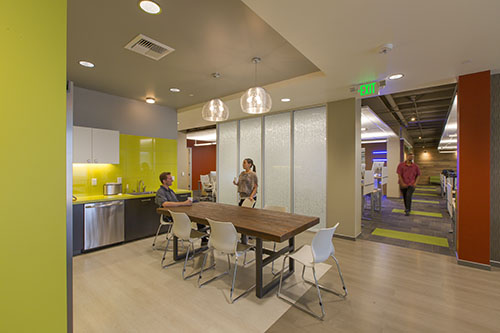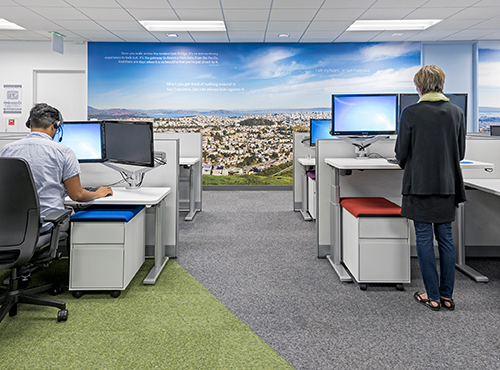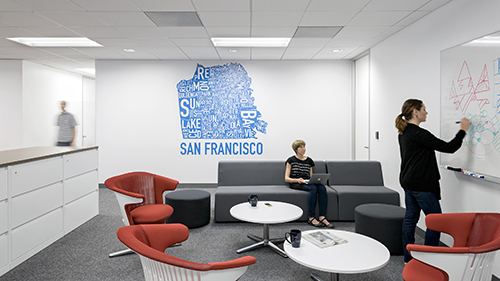Stories
As the Great Place to Work Institute famously found, there is a direct correlation between a strong workplace culture and increased annual profit. The challenge for executives and facilities managers is: how do you design a workplace to support a strong company culture? Isn’t the definition of “a great workplace” different for everyone? After all, every company, every culture, every employee brings different needs/energy/tastes/goals to a work environment. One organizational culture might prioritize flextime. Another might emphasize intense collaboration. Some employees may value the workplace as a social environment, while others see it as a tool for focus.

These differences are why today’s successful workplace design incorporates the process of co-creation. Designers still need to calculate headcounts and square footages for occupancy ratios and adjacencies, but an enriched program and strategy also incorporates the intangibles. Things like: How will the workplace support employee wellness and productivity? How will it represent the organization’s character and values? Should it stimulate interaction? Provide quiet? Express sophistication or fun?

Intangibles such as these have a profound impact on business performance because they affect the way space makes people feel, an often overlooked factor in productivity. Co-creation engages employee leaders and user groups in “blitz” workshops to explore and define the best environment for your organization. Over and over, we have found that this approach adds appreciable value to a project because it establishes an early shared vision and guides the design team toward a solution based on an authentic understanding of your company’s core philosophy and business goals. It ensures that design is the product of the culture that builds it, not the product of a singular ego or a vague idea about a trend. The more control people have over their work environment, the more invested they are in it, and in being active participants in your company.

Beyond the design process, co-creation serves as a powerful engagement exercise for your firm — one that reminds your employees what’s really important and can re-energize your brand and mission. By carefully defining the cultural and organizational needs facing your company, your unique brand strategies become clear.
Finally, an emphasis on co-creation establishes the first steps toward Change Management. With a team of people who have defined their goals and are in control of their environment, change becomes self-driven. The sign of a great co-creation process is that stakeholders are eager to spread the word about the coming change, generating excitement and expressing pride in the direction the company is headed.

A strong workplace grows out of a strong process. Even if you’re starting your project with an established program and design standards, consider investing in a pre-design co-design strategy to get the most out of your workplace evolution.
Janet Braden, IIDA, CID, LEED AP ID+C, is an Associate and Studio Director of Interior Design at RMW’s San Jose Studio. She has worked closely with companies such as Jive Software, Oracle, and Juniper Networks to establish dynamic workplace strategy. Contact her at jbraden@rmw.com.